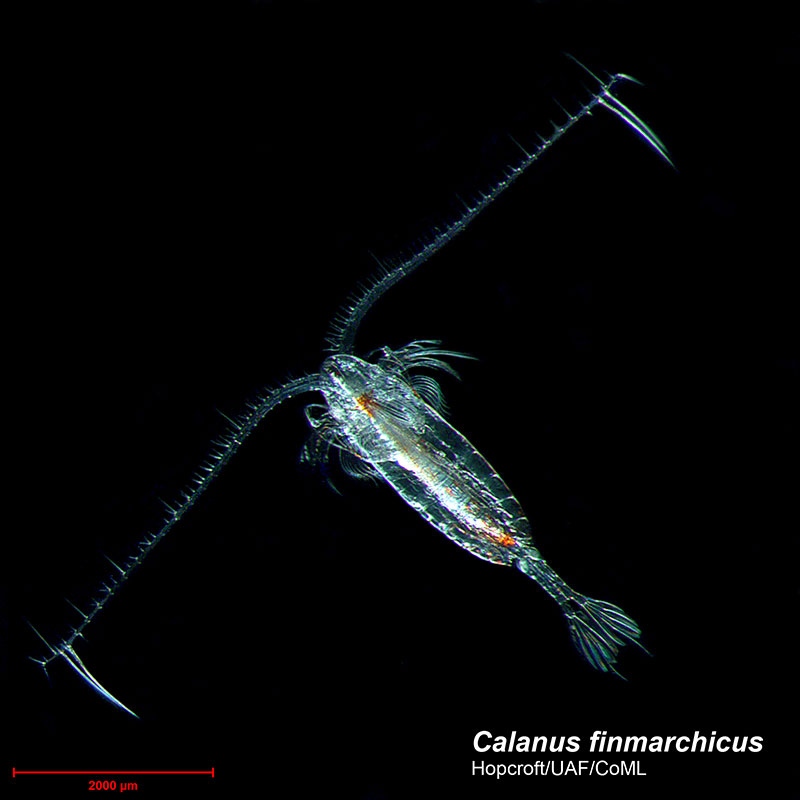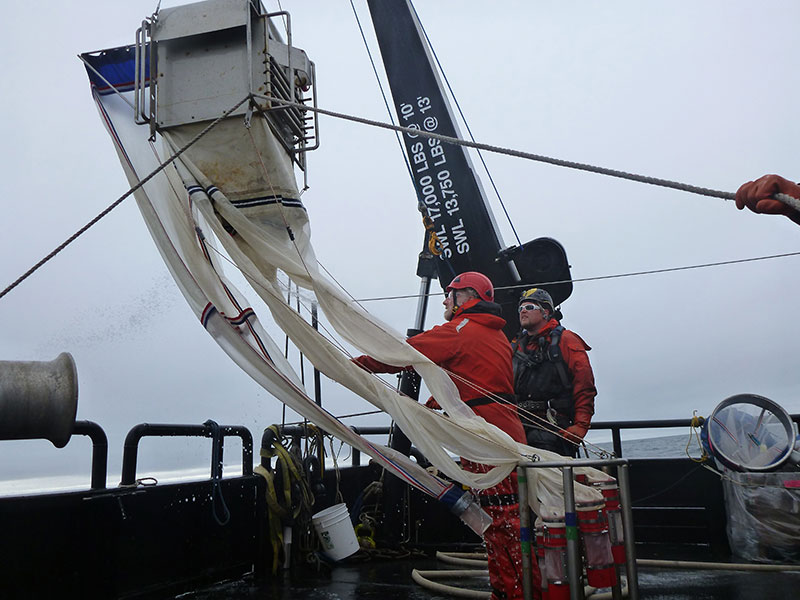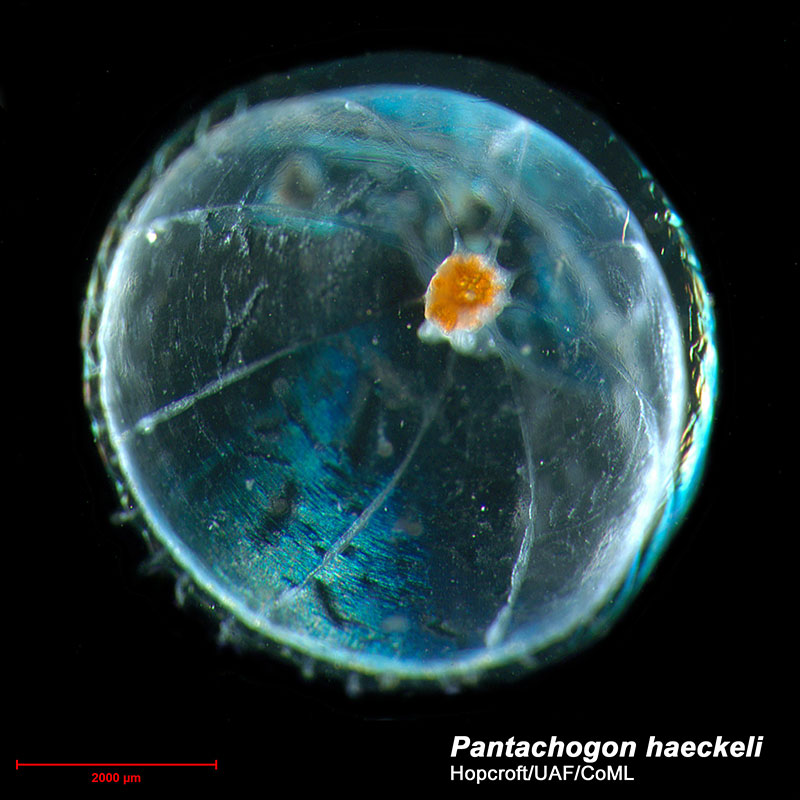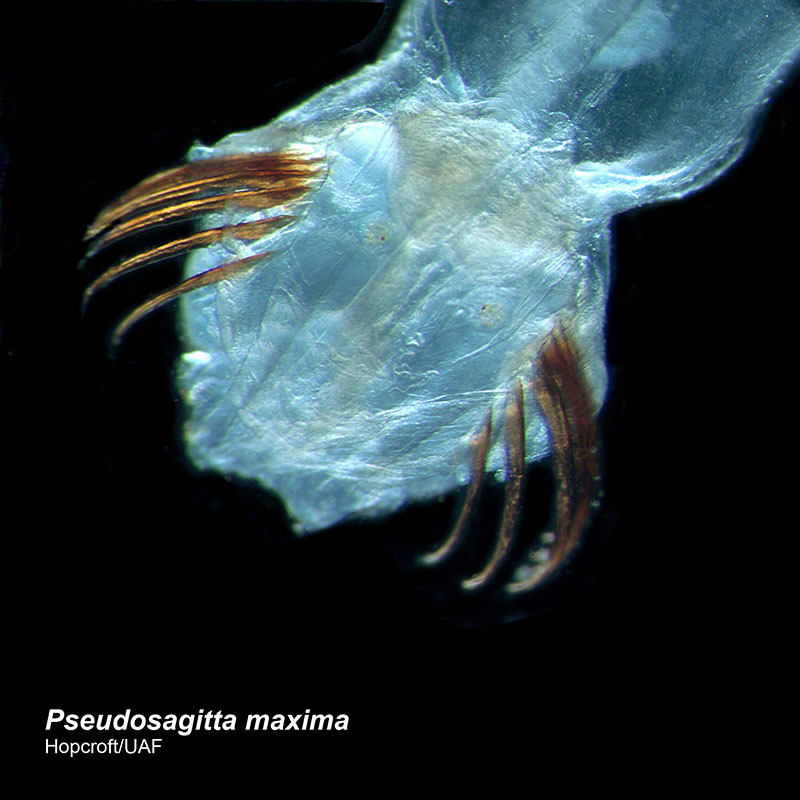
by Russ Hopcroft, Professor, Institute of Marine Science, University of Alaska Fairbanks

Encased in the same suite of armour used by insects, this copepod is among the best known zooplankton group in the Arctic. Image courtesy of Russ Hopcroft, University of Alaska Fairbanks. Download larger version (385 KB).
Imagine floating someplace in space, in complete darkness, where up and down have little meaning. Imagine that you’re hungry, things are floating by you, and that some of them are good to eat while others are not. Now imagine that there is something out there hunting for you. If you move to find food, or grab at it, these hunters might see or hear you. You are slow. There is no place to hide. You have no idea from what direction these hunters might come: front, back, side, above, or below. Some will find you whether you move or not. This is what it means to be the small drifting animals we call zooplankton.
During this summer’s expedition, we will be exploring the poorly known deepwater zooplankton of the Arctic. The smaller, more robust, and “armored” crustaceans, called copepods, are relatively well known here, because they are abundant and survive collection with the elaborate “butterfly nets” designed to target them. The somewhat larger, more fragile, and much rarer animals, such as jellyfish, that hunt them are more poorly known. To place things in perspective based on relative size, during collection a plankton net hits zooplankton at jet speeds: will a suit of armor or a water balloon survive this encounter better?

The multinet is used to collection zooplankton from the water column. Image courtesy of Katrin Iken, University of Alaska Fairbanks. Download larger version (2.1 MB).
While all zooplankton are fascinating because they are so alien compared to our perspective as land animals, the most bizarre body forms typically occur with the soft-bodied “gelatinous” groups. Jellyfish are the best know examples here, but even wilder body forms exist within a half dozen other zooplankton groups.
We believe there remains considerable diversity within the Arctic’s soft-bodied zooplankton, much of it still to be discovered if the right tools are employed. The Global Explorer remotely operated vehicle (ROV) is such a tool, because its high-resolution cameras take our eyes and our brains into this deep and dark realm, allowing us to search large volumes of ocean for these rare, sometimes elusive, creatures that are not captured blindly by plankton nets.
Specialized samplers on the ROV allow us to even collect these animals undamaged. The ROV also allows us to explore the no-man’s land just above the seafloor were plankton nets rarely sample for fear of becoming filled with mud. Everything we see will be digitally captured to facilitate more detailed post-dive analysis and video production.

Under half an inch or one centimeter in diameter, the jelly Pantachogon is often unidentifiable after collection. Image courtesy of Russ Hopcroft, University of Alaska Fairbanks. Download larger version (jpg, 875 KB).

Devil in the dark: Its head equipped with curved hooks for grasping prey, the arrow worm lays motionless waiting to ambush prey when it hears movement nearby. Image courtesy of Russ Hopcroft, University of Alaska Fairbanks. Download larger version (jpg, 757 KB).
To fully assess the entire zooplankton community, our approach is to use a combination of plankton nets for the small and seemly indestructible crustaceans and the ROV for larger and more fragile forms. Through use of an array of opening and closing nets (the multinet) and a slow march downward with the ROV, we will be able to determine preferred depth ranges of both types of organisms plus their associations with each other.
To pave the way for future and more self-contained tools to assess zooplankton, we will be building a genetic library of the organisms encountered. We will then use state-of-the-art genetic techniques to determine the zooplankton’s biodiversity compared to the “old-school” approach of identification under a microscope.